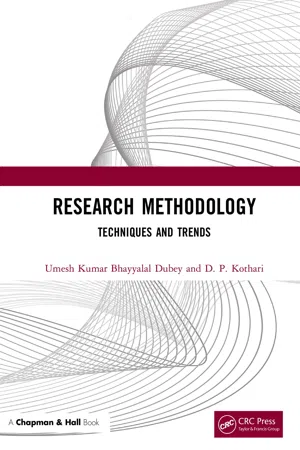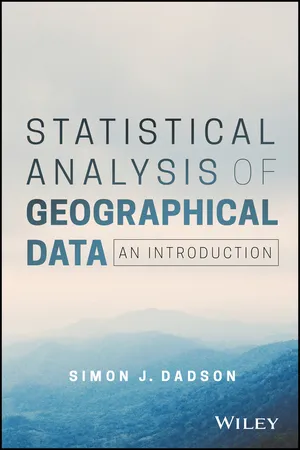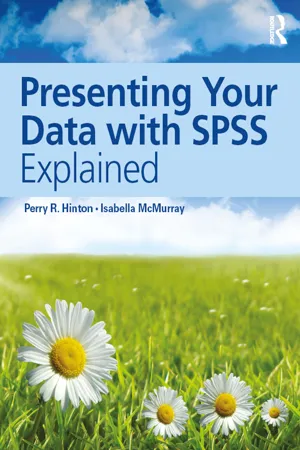Mathematics
Conducting a Survey
Conducting a survey involves gathering data from a sample of individuals to make inferences about a larger population. This process typically includes designing the survey questions, selecting the sample, collecting the data, and analyzing the results. In mathematics, survey data can be used for statistical analysis and to draw conclusions about a population.
Written by Perlego with AI-assistance
Related key terms
8 Key excerpts on "Conducting a Survey"
- eBook - ePub
Research Methodology
Techniques and Trends
- Umesh Kumar B Dubey, D P Kothari(Authors)
- 2022(Publication Date)
- Chapman and Hall/CRC(Publisher)
8 Survey ResearchDOI: 10.1201/9781315167138-88.1 Introduction to Survey Research
Survey research is one of the most relevant techniques basically used for collecting data. This method involves any measurement procedures that prominently include asking questions from respondents or the subjects selected for the research study. The term “survey” can be defined as a process that may involve an investigation or an examination or assessment in the form of a short paper and pencil feedback form to an intensive one-on-one in-depth interview. The method tries to gather data about people, their thoughts and behaviors, with the help of the questionnaire or other statistical tools.A researcher should at first explore all sources of secondary data and verify the possibility of their usage for the research at hand. But it may so happen that after a point, these secondary data, for making further marketing decisions, might prove to be inadequate or of no use to the researcher. In such cases, the researcher has to go in for primary data research employing survey research method.A survey cannot measure the behavior of people, but can trace a certain behavior to the perceptions, feelings, attitudes, beliefs, and other personal characteristics of the respondent.8.2 Concept and Meaning of Survey Research
The method of survey research does not involve any observation under controlled conditions, hence it is a nonexperimental. Descriptive research used for studying of large sample is one of the quantitative method. Population is referred to as the universe of a study, which can be defined as a collection of people or object, which possesses at least one common characteristic. - eBook - ePub
Statistical Analysis of Geographical Data
An Introduction
- Simon James Dadson(Author)
- 2017(Publication Date)
- Wiley-Blackwell(Publisher)
2 Collecting and summarizing data STUDY OBJECTIVES Appreciate the range of possible sampling procedures and the importance of randomization and replication in research design. Recognize a range of different graphical methods for presenting data (e.g. histograms, time series, scatter plots) and understand the circumstances in which each can be used. Understand the range of measures of central tendency: mean, median and mode. Appreciate some measures of dispersion: variance, standard deviation and inter‐quartile range. 2.1 Sampling methods 2.1.1 Research design In statistics the entire group of entities that is of interest is called the population, and it is desirable to be able to make statements about the population from a smaller fraction of the population, which is called a sample. Examples of geographical research in which sampling techniques are typically used include population census surveys, assessments of biodiversity from field samples, monitoring of atmospheric and oceanic processes using sparsely deployed instruments, and surveys and questionnaires designed to support interviews. It is clear that in any study the results will be applicable only to the measurements made in that study, although it might be hoped that they will lead to statements that can inform the development of a wider body of theory and that these inferences may then be subjected to more comprehensive tests. In any case it is important to define the target population at the outset of the study. The target population is the population that the study aims to investigate. In many cases it will be possible to enumerate the population, perhaps through an electoral roll, a list of shops in a shopping centre, or a set of trees in a forest. In other cases, the population will be harder to enumerate and in some situations it will be almost impossible to list the entire population (e.g - eBook - ePub
- Glynis M Breakwell, Daniel B. Wright, Julie Barnett, Glynis M Breakwell, Daniel B. Wright, Julie Barnett(Authors)
- 2020(Publication Date)
- SAGE Publications Ltd(Publisher)
Conceptually, surveys and sampling techniques are not tied to any particular philosophical viewpoint. Those adopting a hypothetico-deductive approach will be concerned to sample appropriately, as will those taking a more constructivist perspective. Whenever the goal is to make statements about a population of people by drawing a sample, how you draw your sample will determine how much confidence you can have in the accuracy of your findings.Similarly, surveys are not tied to any particular data-gathering technique. While structured questionnaires are by far the most common form of data collection in surveys, it is perfectly possible to collect qualitative data, or to count, weigh and observe population units within a sample survey. Randomised experiments can also be done using sample surveys, with respondents randomly allocated to treatment and control groups. Physiological and other more invasive measures can also be collected in surveys. The Health Survey for England (see http://healthsurvey.hscic.gov.uk/support-guidance/public-health/health-survey-for-england-2017.aspx ), for instance, collects height, weight, blood pressure and lung function measurements as part of the interview.15.2 Statistical Inference: From Sample to Population
The underlying motivation of sampling is to make statistical inferences about populations using samples. That is, we wish to use known facts (characteristics of the sample) to understand unknown facts (characteristics of the population) (King et al., 1994). A population is the complete set of objects in which we are interested. Objects may be individuals, households, organisations, countries or practically anything we can define as belonging to a single class. For example, the complete set of students in your university can be defined as a population, as can the pebbles on a beach, or the trees in a wood. Because populations are often extremely large, it is usually not feasible – for practical reasons – to take measurements on every element in the population. For this reason, we draw a sample and generalise from the properties of the sample to the broader population. Because we are only making measurements on a subset of the total population, we can make more – and more-detailed – observations on each sample element. When we do make observations on every element in the population, we are conducting a census - eBook - ePub
Understanding and Doing Successful Research
Data Collection and Analysis for the Social Sciences
- Shaun Best(Author)
- 2014(Publication Date)
- Routledge(Publisher)
12 What is a sample survey? By the end of this chapter you should have an understanding of:• what social scientists mean by a sample survey• what sampling and population mean and why researchers often use a sample of the population• the common problems with sampling procedures such as sampling error• non-response in survey research• good practice in survey research• the descriptive social survey• the analytical sample survey• the problems and issues of using questionnaires as a method of data collection• questionnaire design.IntroductionIn the social sciences when we use the word survey we mean that we are in interested in collecting information in a systematic manner about a given population. The most popular methods for the collection of survey data over the years have been by postal questionnaire, structured interview and focus group. Surveys can range from the very simple description of frequency counts to complex analysis; from the very local analysis of, for example, one secondary school to national or even international comparisons of educational systems. In all cases, researchers are interested in finding patterns, regularities, similarities and differences within and between the population they are interested in and in relation to the wider society, perhaps in order to identify causal relationships or predictive patterns of behaviour. In order to do this we have to be systematic. If we choose to use a questionnaire, our sample has to be representative of the population we are interested in. Our data collection will involve asking every person in our sample the same questions, using the same words, in the same order so that any differences that are identified are a product of real differences between people in the population and not as a result of the way we have collected our data.This chapter will explain what researchers understand by a sample survey and the difference between a descriptive survey and an analytical survey. Many of the issues that survey researchers face will be explored, such as what makes a good questionnaire design, what the characteristics of effective questions are, whether questionnaires can be used to survey people’s attitudes and feelings towards sensitive issues, and ethical issues that might emerge in the course of the data collection process. Different types of sampling will be explained. Although it is good practice to have a representative sample of the population you are interested in, how do you ensure that your sample is representative and importantly how can you conduct a valid and reliable research project when it is not possible to use a representative sample? The chapter includes a discussion of the work of the Institute of Community Studies (now the Young Foundation). Although this research is now very old it was very influential both in academic circles and in terms of public policy. This is surprising given that the researchers did not use representative samples of the population but what is valuable to us is the open and honest way in which they explain how and why the Institute selected its samples from the population. - Bonita Kolb(Author)
- 2018(Publication Date)
- Routledge(Publisher)
● Quantitative results from surveys need to be calculated. The data can then be analyzed using descriptive statistics to find patterns in the responses. Descriptive statistics include frequency, central tendency and dispersion. These statistics will not only describe which responses were most frequently given but also the distribution of responses across the different available answers. Inferential statistics can then be used to determine statistical differences.● To obtain more information on how the individual responses are distributed from the mean, the researchers will need to use statistical measures of dispersion. These include range, variance and standard deviation. Tests of statistical significance can be used to conduct hypothesis testing.Research analysis process
A tourism organization will have spent a considerable amount of time planning the research process including determining the research question and deciding upon the methodology that will best provide the answer. After these two major decisions, the organization then faced the task of finding participants. Finally, the organization conducted the research.After conducting the research, it is now time to analyze the research findings. The excitement of conducting the research is over, and the researchers may be ready to move on to a new project. This would be a mistake as just having data does not answer the research question. Without careful analysis of the data, recommendations cannot be made and the entire research process would be wasted.There may be an assumption that all that is needed is to print out the data and present it in a report. The problem is that people who do not regularly conduct research may not understand the meaning of the data. The research data needs to be interpreted to provide information which can be used to make decisions.The analysis process varies dramatically depending on whether quantitative or qualitative research has been conducted. A quantitative research method provides information that is in numerical form such as the number of responses to each question. The analysis process uses mathematics and statistics to describe this data. By contrast, qualitative research results in transcribed verbal comments. To analyze this data the researcher will use coding and development of themes and categories to make sense of the findings in a way that will result in recommendations for action.- eBook - ePub
Practical Social Investigation
Qualitative and Quantitative Methods in Social Research
- Richard Lampard, Christopher Pole(Authors)
- 2015(Publication Date)
- Routledge(Publisher)
However, in common with other forms of quantitative research, the survey method can generate a diverse range of responses from the 'person in the street', varying from uncritical acceptance and respect to irrational distaste, and from fascination to boredom. This range of reactions has also long been evident among students and academics, with the prestige of survey research varying markedly both between and within academic disciplines and institutions. In the early 1980s Cathie Marsh felt that there was a need for a vigorous defence of the survey method against its critics (Marsh, 1982). However, at the beginning of the twenty-first century, the trend towards a near-universal recognition within British social research of the contributions that both quantitative and qualitative methods can make reduces the necessity of taking such a stance. On the other hand, much can be learnt from the critics of survey research; reflecting upon criticisms is a good way of ensuring that surveys are constructed and implemented in a fashion calculated to generate valid and useful data, and that they are used for research tasks to which they are well suited. Reflexivity is as important for the survey researcher as it is for the qualitative researcher.Marsh provides us with a very general but also very useful definition of the (social) survey. In her view a survey takes place when:- systematic measurements are made of the same set of properties, or variables , for each of a number of cases;
- the resulting data can be laid out in the form of a rectangle, or matrix , in which the rows correspond to the cases and the columns correspond to the properties or variables (see Figure 5.1 later in the chapter);
- the intention is to look at patterns in the variables by aggregating information from the different cases (Marsh, 1982: 7).
Key features of this definition are the collection of a standardised range of information corresponding to each member of a set of cases and the counting process implicit in the aggregation of information across cases. (For example, a researcher may count how many members of a survey sample identify with the Labour Party.) The validity of this counting process depends on the equivalence of the information collected from the various cases, i.e. standardisation is a foundation of quantification.Clearly a matrix consisting of cases and variables can be generated in a variety of different ways, not just by administering a questionnaire or interview schedule to a sample of individuals. For example, the observation of a class of school pupils in a number of different hourly lessons might generate a matrix where the cases (rows) were the various pupils and each variable (column) indicated whether a pupil had asked a question in a specific lesson. Furthermore, additional variables (columns) might contain information about each pupil (e.g. their gender, ethnicity, etc.). Alternatively, the units of analysis may be something other than people. For example, the rows of a data matrix might correspond to different countries and the columns to various aspects of the countries' populations (e.g. population size, death rates, fertility rates, etc.) obtained from official statistics. Thus the source of the data in a data matrix may be questionnaires, documents, observation, etc., and the units of analysis may be individuals, parliamentary constituencies, nations, etc. - eBook - ePub
- Perry R. Hinton, Isabella McMurray(Authors)
- 2017(Publication Date)
- Routledge(Publisher)
As was noted above, the Sparcote researchers chose to give their survey out in the final class of the year where they were expecting all the students to attend to discuss their second-year studies. As the survey only takes about five minutes to complete, this was undertaken at the end of the class. As a result all the students were given a copy of the survey to fill in concurrently, producing the data from a large number of students all at the same time. In this way, the researchers were able to get 183 completed surveys out of a student cohort of 195 (with twelve students not completing it for various reasons – mostly that they were absent from that class), an exceptionally high response rate for a survey. (Had the survey been put online and the students emailed with a link to follow for the completion of the survey, we would expect the completion rate to be considerably lower.)STAGE 4: MAKING SENSE OF THE DATA Why we need statisticsAs we have explained earlier, the point of collecting data in a research study is to answer a research question or questions. However, when you have completed the study the resultant data can often look like a large and overwhelming spreadsheet of numbers and you may not yet be able to say what conclusions you can draw from the information gathered in relation to your research question or aim. Therefore you need to do something with the data to start to make it easier to understand – and provide answers to the research questions. Remember that quantitative research is usually about groups rather than individuals, so we need to find a way to sum up the results of a group of participants rather than listing out all their individual results. This is where statistics come in.statistics A characteristic of a sample, such as the total or the sample mean. More generally, statistic and statistics are used to describe techniques for summarising and analysing numerical data.Descriptive statistics: to summarise the findingsThe word statistics sounds more complex than it actually is. Statistics need not be complicated. In reporting information about the participants who took part in the study we do not provide detailed descriptions of each person but report relevant details about groups such as there were 74 women and 69 men in the study. A total – simply adding up the number in a group or category – is a statistic. The first thing we need to do with our data is to provide a summary of the findings. To do this we use descriptive statistics , like the total or the average (or mean ), to provide clear descriptions of our findings, often in the form of a table, along with illustrative statistics such as charts and graphs. We will be explaining which descriptive statistics to use with which type of data in Chapter 3 - eBook - ePub
Making Research Relevant
Applied Research Designs for the Mental Health Practitioner
- Carrie A. Wachter Morris, Kelly L. Wester(Authors)
- 2018(Publication Date)
- Routledge(Publisher)
4 Evaluating and Designing Surveys W. Bradley McKibbenThroughout this book, you are exposed to a variety of methodologies that can be used to answer important research questions. Many of the methodologies discussed in this book, including quantitative and experimental designs, may utilize surveys as part of the study. Have you ever thought about where these surveys come from, how a survey is created, or whether a survey is actually a good one? There is an old saying that a worker is only as good as one’s tools, and this holds true for survey-based research as well. The conclusions we draw from responses to a survey are only as good as the extent to which those responses are valid and reliable. The purpose of this chapter is to familiarize you with the process of designing a survey so that you have the tools to develop your own survey, should the need arise. You will learn how surveys are typically used in counseling research, what surveys are designed to do, and the steps you need to take in designing a survey. Because this chapter merely scratches the surface of survey design, the chapter will conclude with additional resources that can further guide you through the process.Introduction to Survey Design
Surveys are a common tool that practitioners and other helping professionals use to gain information about human behavior, thoughts, emotions, personality traits, and more. Whereas researchers in natural sciences such as biology, chemistry, or physics can observe and study physical phenomena more directly, behavioral scientists such as counselors, social workers, or psychologists tend to study occurrences that are difficult to observe directly because they exist in the psychological realm rather than the physical world. For example, a chemist can study the molecular composition of cells through carefully organized experiments and observations. Because a cell is a physical object, the cell and its components can be studied directly. Now, consider the cognitive-behaviorally oriented practitioner who is interested in negative thought patterns. Many people likely would agree that such thought patterns exist, but they cannot be observed directly in the physical world. We cannot observe negative thought patterns in a vial or under a microscope.
Learn about this page
Index pages curate the most relevant extracts from our library of academic textbooks. They’ve been created using an in-house natural language model (NLM), each adding context and meaning to key research topics.







